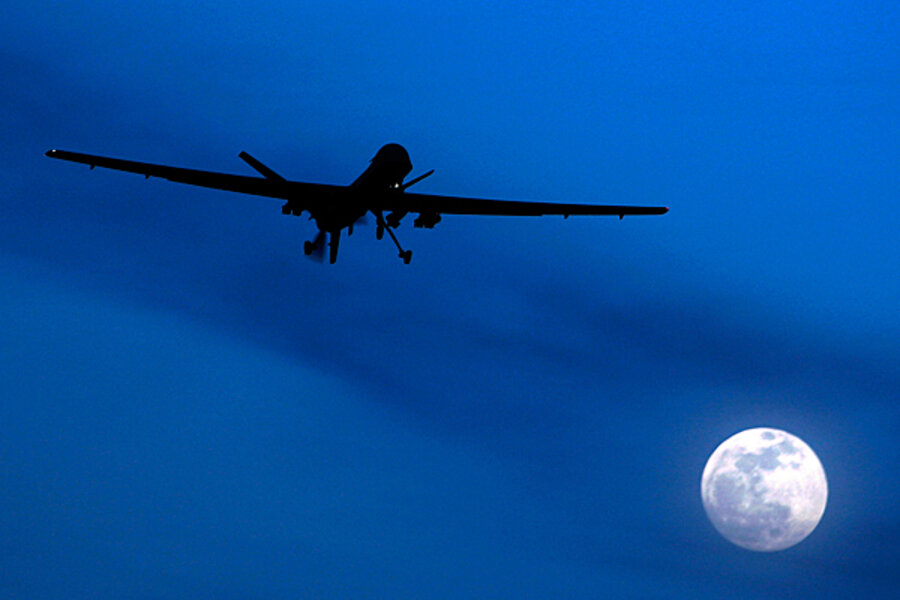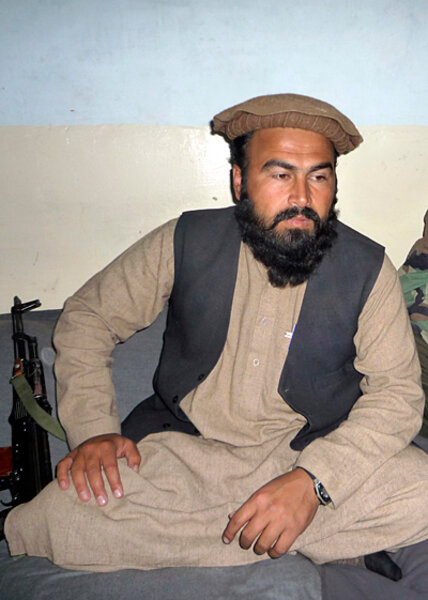Who’s who in the Pakistan Taliban
Loading...
| Islamabad, Pakistan
Questions resurfaced this week as to whether Hakimullah Mehsud, the brash young commander of the Pakistani Taliban, was killed by a US drone attack on Jan. 14.
Renewed speculation that the Taliban leader was dead was sparked by a report on Pakistani state television Sunday night saying he had been buried.
The Taliban denied the report through their spokesman, Azam Tariq. Pakistan Army spokesman Maj. Gen. Athar Abbas said the military is still seeking confirmation.
Mr. Mehsud took power last August when his predecessor, Baitullah Mehsud, died from injuries sustained in a US airstrike.
Here’s a list of possible contenders to succeed Hakimullah, as well as other key figures in the Pakistani Taliban.
Waliur Rehman
As deputy leader of the Pakistani Taliban, Waliur Rehman, a former spokesman for Baitullah Mehsud, is the opposite of the fiery Hakimullah. He's quiet, serious, and brooding. The religious scholar – whose studies qualify him for the honorific of “mullah” – lacks Hakimullah’s charisma and reputation for boldness but retains a sizable following.
Following Baitullah’s death in August 2009, Pakistani intelligence officials reported that Mr. Rehman and Hakimullah had engaged in a gun battle that left one or both of them dead. That was proved untrue when both men posed for cameras at a press conference last October, though reports of rivalry between the two men persisted. The Pakistani government currently has a $600,000 bounty on Rehman's head.
According to Rifaat Hussain, a security analyst at the Quaid-e-Azam University in Islamabad, Rehman and others “may now be having second thoughts about mounting a leadership bid, perhaps fearing that he will meet the same fate as the previous two occupants of the post.”
Qari Hussain
The so-called father of suicide bombers and a top lieutenant of Hakimullah's, Qari Hussain was also reported to have been killed in a drone strike in Makeen, South Waziristan, last summer, but later reemerged in the October press conference alongside Rehman and Hakimullah.
A cousin of former leader Baitullah, Mr. Hussain’s reputation was built on running training camps for suicide bombers and directing a series of suicide bomb attacks in the Federally Administered Tribal Areas (FATA) aimed at killing tribal elders and supplanting their rule.
According to Amir Rana, a militancy expert at the Pakistan Institute for Peace Studies in Islamabad, Hussain is now responsible for coordinating three major fronts for the Taliban: the Khurram tribal agency against Pakistani security forces; Dera Ismail Khan, a northwestern town and gateway into Punjab, Pakistan’s most populous province; and Punjab itself.
His modus operandi involves exploiting anti-Shiite sentiment among certain Sunni groups to goad their members into carrying out attacks against Shiites. As a result he enjoys high standing among anti-Shiite groups, both foreign mainly Uzbek fighters in Pakistan, and Pakistan’s longstanding sectarian groups, says Mr. Rana.
Maulana Fazlullah
Last spring, Maulana Fazlullah, commander of the Taliban faction in the northwestern Swat Valley, and his father-in-law, Sufi Mohammed, were the names on every Pakistan observer’s lips. As Mr. Fazlullah’s forces advanced beyond Swat into the neighboring district of Buner, just 60 miles north of Islamabad, visions of a Taliban horde descending on the capital prompted the government to call off a peace deal and battle Fazullah’s approximately 2,000 fighters with some 15,000 troops.
The Pakistan Army prevailed, and maintains a heavy presence in the region. While Sufi Mohammed, who brokered the deal, languishes in a Peshawar jail awaiting charges of sedition, Fazlullah is nowhere to be found, despite being reported as “critically injured” and “surrounded” by Pakistan forces.
His loss of a major chunk of Taliban territory all but rules him out as a serious contender for the leadership of the Pakistani Taliban, according to Rana and Professor Hussain. The fact that he does not hail from the tribal agencies is also likely to work against him.
Other senior figures
Other contenders include Faqir Muhammad, who assumed the post of deputy chief of the Pakistani Taliban when the umbrella group was formed in December 2007. Following Baitullah’s death, Mr. Muhammad unilaterally declared control of the organization from his base in the Bajaur tribal agency, but was soon bypassed by Hakimullah. It remains to be seen whether he will mount a fresh bid for the organization’s leadership.
A few well-known militant leaders operating from FATA are unlikely to throw their hats in the ring owing to peace deals with the government. These include Hafiz Gul Bahadur and Maulvi Nazir, two commanders based in North Waziristan who began to disassociate themselves from the Pakistani Taliban following Baitullah Mehsud’s death – partly to focus on Afghanistan instead and partly because the government was trying to peel them away. When the Army launched an offensive in Hakimullah’s stronghold of South Waziristan last October, the two agreed not to join the fight.






